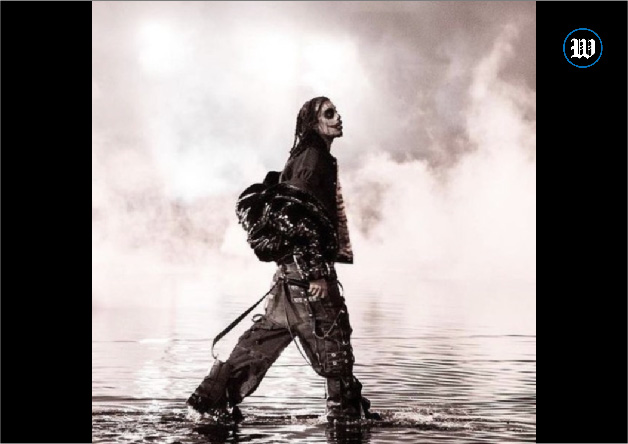In the intricate world of music, creativity is the ultimate currency. Few artists embody this principle as profoundly as Playboi Carti. His enigmatic presence in the industry, coupled with a unique style that defies conventional categorization, has established him as a cultural icon. One of the most fascinating elements of Carti’s artistry is his connection to the concept of the “backrooms.” This term, steeped in mystery and intrigue, has been woven into the narrative of Carti’s work, symbolizing a deeper layer of genius that fans and critics alike strive to understand.
The Allure of the Backrooms
The term “backrooms” has become a staple in internet culture, often associated with a surreal, liminal space that exists just out of reach of normal reality. For many, it represents an unsettling realm, a place of uncertainty and the unknown. In the context of Playboi Carti’s music, the backrooms symbolize the enigmatic and often otherworldly atmosphere he creates through his sound and persona. Carti’s music is not just about beats and lyrics; it’s about crafting an entire universe that feels both familiar and alien, much like the concept of the backrooms.
This connection between Carti and the backrooms is more than just a metaphor. It’s a deliberate choice that aligns with his brand of artistry—one that thrives on ambiguity, abstract expression, and the blurring of reality and fiction. The backrooms in Carti’s world are not just places; they are states of mind, reflective of the psychological and emotional layers embedded in his music.
The Genius Behind Carti’s Liminal Spaces
Playboi Carti’s genius lies in his ability to translate the concept of the backrooms into auditory experiences. His tracks often carry an ethereal quality, characterized by minimalist beats, distorted vocals, and a haunting use of silence. These elements work together to create a sonic landscape that feels as though it exists in the spaces between reality, much like the backrooms themselves.
Carti’s use of repetition, fragmented lyrics, and unconventional song structures further enhance this feeling of being trapped in a liminal space. His music often challenges listeners to rethink their understanding of time, space, and narrative in music. By doing so, Carti creates a parallel between the backrooms’ eerie, endless corridors and the looping, hypnotic nature of his tracks.
Moreover, Carti’s visual aesthetic also draws heavily from the backrooms concept. The use of dark, moody lighting, disorienting camera angles, and surreal imagery in his music videos complements the audio experience, pulling the audience deeper into the backrooms. It’s a cohesive artistic vision that blurs the lines between music, visual art, and conceptual storytelling.
Carti’s Cultural Impact and the Backrooms
The influence of Playboi Carti extends far beyond his music. His connection to the backrooms has permeated pop culture, inspiring countless fan theories, discussions, and interpretations. This cultural impact is a testament to Carti’s genius—his ability to create art that resonates on multiple levels, prompting engagement from a diverse audience.
Fans often find themselves drawn into the mystery of the backrooms, attempting to decode the hidden meanings in Carti’s lyrics and visuals. This engagement transforms listening to Carti’s music into an interactive experience, where fans become part of the narrative, exploring the backrooms alongside Carti. It’s a form of artistry that goes beyond passive consumption, inviting active participation from the audience.
Carti’s ability to tap into the collective consciousness, using concepts like the backrooms to evoke a sense of shared experience, is a rare talent. It speaks to his understanding of the power of symbols and the importance of creating art that transcends the ordinary. In this way, Carti’s genius is not just in his music but in the entire cultural phenomenon he has built around it.
The Future of Carti’s Backrooms
As Playboi Carti continues to evolve as an artist, the concept of the backrooms is likely to remain a central theme in his work. This enduring fascination with liminal spaces and the unknown will continue to inspire his music, visuals, and overall artistic direction. For fans and critics, this means that Carti’s future projects will likely delve even deeper into the mysterious and the surreal, pushing the boundaries of what music can be.
Carti’s genius lies in his ability to keep his audience guessing, to continually create art that defies easy interpretation. The backrooms, with their endless possibilities and infinite interpretations, are the perfect metaphor for Carti’s ever-evolving artistry. As he moves forward, we can expect Carti to explore new dimensions of this concept, taking his audience on an even more immersive journey into the unknown.
Conclusion: Decoding Carti’s Genius
Playboi Carti is an artist who thrives on mystery, and his connection to the backrooms is a perfect example of how he uses abstract concepts to enhance his music. The backrooms are more than just a metaphor in Carti’s work—they are a symbol of his unique approach to art, one that challenges conventional ideas of music, culture, and reality.
Through his use of the backrooms, Carti has created a body of work that is both captivating and elusive, drawing listeners into a world where the lines between the real and the surreal are constantly blurred. His genius lies in his ability to turn these abstract ideas into tangible experiences, whether through music, visuals, or cultural impact. As fans continue to explore the depths of Carti’s backrooms, they uncover not just the genius of Playboi Carti, but also the limitless possibilities of artistic expression.
This exploration of the backrooms in Carti’s work is just one layer of his complex artistry. As his career progresses, it will be fascinating to see how Carti continues to push the boundaries of music and culture, using the backrooms as a lens through which to view the world. In the end, Carti’s backrooms are not just a space—they are a reflection of the genius that lies at the heart of his creative vision.


